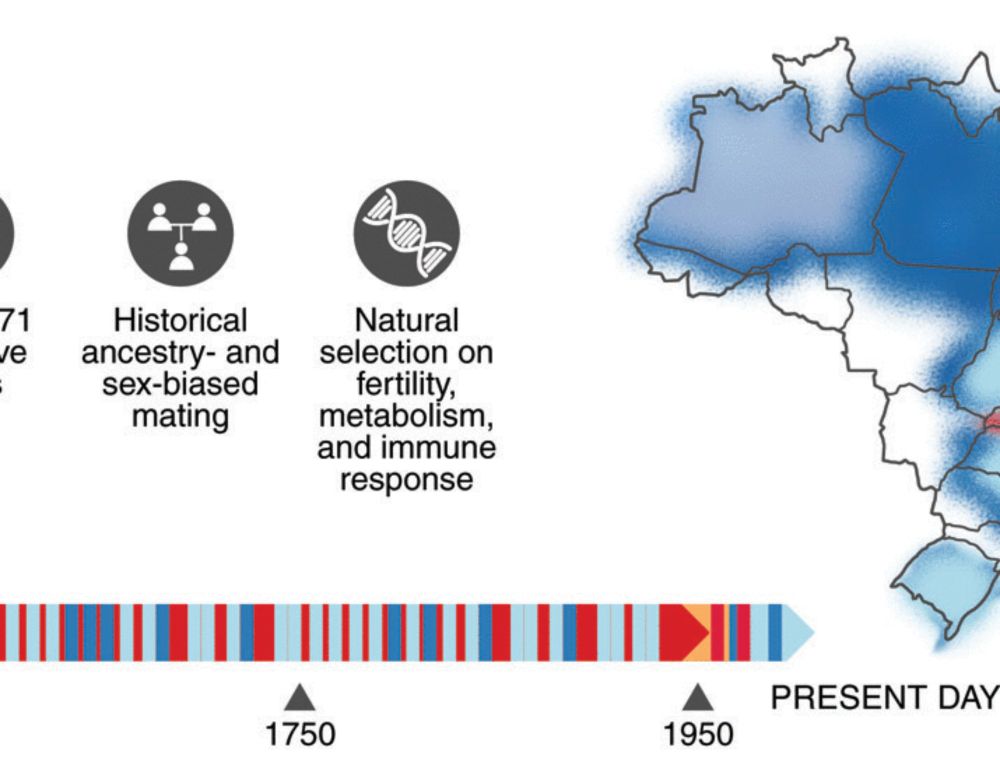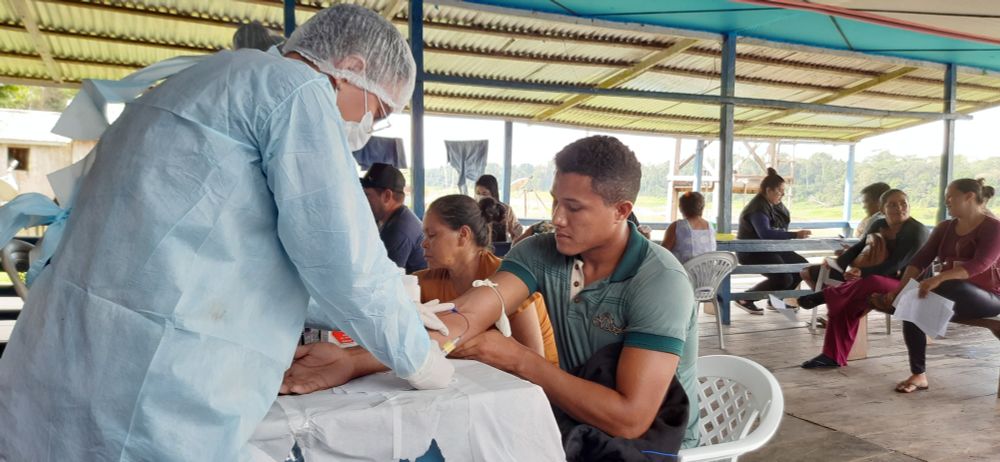
Proud to have contributed to the DNA do Brasil project and to shed light on Brazil’s rich genetic history.
🔗 Read the paper: science.org/doi/10.1126/...
🧵Thanks for reading! RTs appreciated. #genomics #Brazil #SciComm

Proud to have contributed to the DNA do Brasil project and to shed light on Brazil’s rich genetic history.
🔗 Read the paper: science.org/doi/10.1126/...
🧵Thanks for reading! RTs appreciated. #genomics #Brazil #SciComm
Massive effective population size declines
Regional differences in genetic isolation
Long IBD segments in Amazonas (northern Brazilian state) reveal deep founder effects and recent inbreeding
Massive effective population size declines
Regional differences in genetic isolation
Long IBD segments in Amazonas (northern Brazilian state) reveal deep founder effects and recent inbreeding
Genes linked to immune response (MHC/HLA), fertility, metabolism
Selection shaped by regional environments & disease burdens
Especially strong signals from Indigenous ancestry
Genes linked to immune response (MHC/HLA), fertility, metabolism
Selection shaped by regional environments & disease burdens
Especially strong signals from Indigenous ancestry
We uncovered fine-scale structure — some individuals were formed by admixture between African populations that likely never met on the continent itself.
We uncovered fine-scale structure — some individuals were formed by admixture between African populations that likely never met on the continent itself.
Admixture peaked in the 18th–19th centuries
Initially: sex-biased mating (mostly European men + African/Indigenous women)
Now: ancestry-assortative mating dominates
Admixture peaked in the 18th–19th centuries
Initially: sex-biased mating (mostly European men + African/Indigenous women)
Now: ancestry-assortative mating dominates
Many are rare and ancestry-specific.
We found correlations between ancestry proportions and deleterious variant burden.
Many are rare and ancestry-specific.
We found correlations between ancestry proportions and deleterious variant burden.
This is one of the largest WGS datasets from Latin America.
And we found 8.7 million variants not seen in public datasets.
This is one of the largest WGS datasets from Latin America.
And we found 8.7 million variants not seen in public datasets.
Yet, its genomic diversity remains underrepresented in global databases.
We set out to change that.
Yet, its genomic diversity remains underrepresented in global databases.
We set out to change that.



